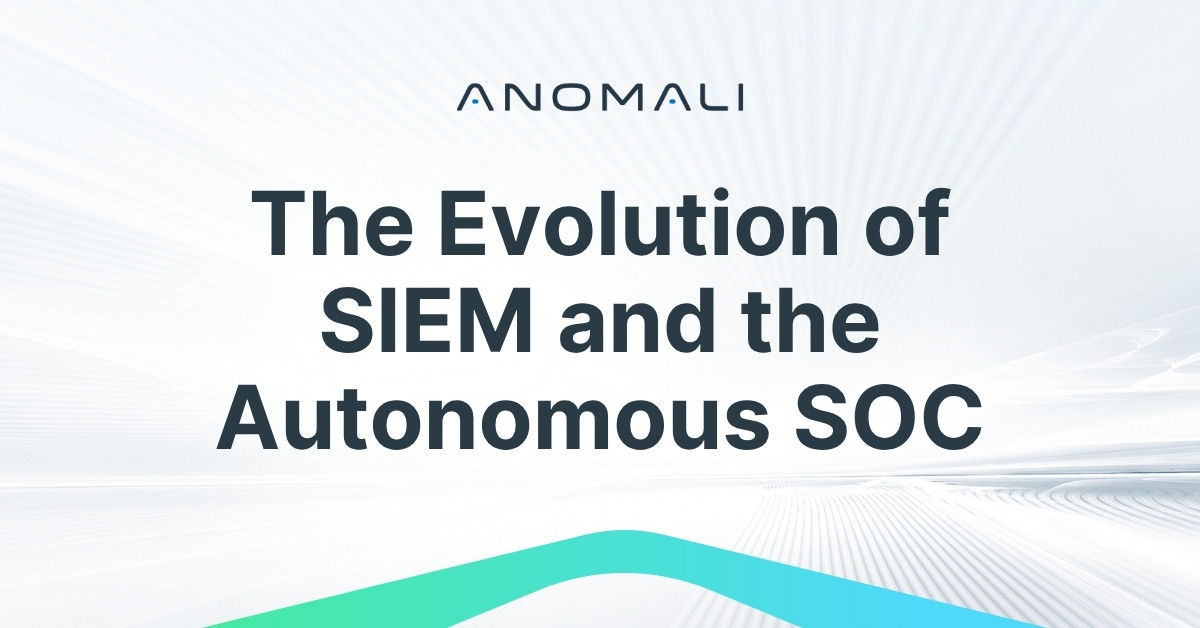How to Combat AI-Driven Threats

.png)
The stakes of cyber defense have never been higher. With emerging technologies comes the evolution of cyber threats. Sophisticated AI-enhanced threat actors can now scale their attacks, producing a volume and frequency of attacks never before seen in cyber intelligence.
It’s abundantly clear that threat actors are employing AI techniques, which should be prompting CISOs to ask the question, “Are we?”
In a recent webinar, George Moser sat down with Francis Odum to discuss how to combat the new landscape of AI-driven threats. The takeaways were clear — if threat actors are using AI, defenders can’t afford not to.
The Sheer Volume of Cyber Threats in the Age of AI
The old manual process of attacks is long gone. Threat actors can write scripts and even employ specialty-built software like FraudGPT to hit targets with tens of thousands of attacks at once. The “alert overload” attack methods make it so analysts are constantly chasing their tails, responding to unprecedented volumes and unable to sort the signal from the noise.
The modern attack models make it so relying on legacy systems and manual responses is no longer a viable option.
- Analysts simply can’t comb through data in a manual process when thousands to millions of alerts come in at once.
- Analyzing data from a specific actor or knowing what to look for become impossible under the current threat landscape.
- Legacy systems that charge companies by data volume are becoming too costly to maintain. Holding onto data is necessary for proactive defense, and in some cases legal compliance, making data-based costs untenable.
Understanding the volume of threats, having access to vast data lakes in seconds, and being able to sort through the data to find specific needs all require modern techniques and software.
From Signal to Analysis, Modern Defense Requires Modern Platforms
Leveraging AI in cyber defense can be intimidating. You may be asking — do I need a software development background or to learn to write code? The answer is no.
Employing built-in systems, like Anomali’s Copilot, analysts can use a simple question to prompt advanced search queries, without requiring extensive coding expertise and saving time on manual prompting.
“Ask are we leveraging AI-driven analytics? And you don’t need to be an AI expert. We are not talking about going out and writing and coding AI programs,” said George Moser, Chief Growth Officer at Anomali.
Anomali allows cyber defenders to comb through vast data lakes to identify attack attempts dating back months to years to identify indicators of compromise (IoCs).
AI-Driven Analytics Can Significantly Reduce Cybersecurity Costs and Improve Threat Detection and Response
Throughout the webinar, George and Francis agree that using AI-driven software reduces overall costs and improves threat detection and response.
George emphasized the importance of leveraging AI to improve cyber resilience saying, “To improve our measurable cyber resilience, you have to improve the maturity of your cyber capabilities, the capability to detect, prevent and respond,:
In his previous role at a Fortune 1000 global manufacturer, George’s team consolidated all cyber observables into a single data lake and used AI to enrich threat data, which allowed for better threat management and reduced the need for manual intervention.
Francis echoed this, citing the role of AI in improving alert fidelity and automating workflows. “Another one in which we’re seeing AI help is in automated workflows, whether that’s trial processes, your enrichment processes, or a lot of your low complexity cases,” he said. He also mentioned the publication of a recent report on AI in cybersecurity, which provides insights into how AI can shift and change the security landscape.
“We just published our AI with the setups reports, and so you could actually find this is our report where we talked about the role in which AI is helping shifting and changing the SOC and especially as it relates to cost and helping organizations manage all the challenges that they have,” Francis added.
George concluded by sharing his experience with the Anomali platform, which used AI to automate threat hunting and reduce costs. “Every time a new threat alert came out, we could hunt for that threat in the organization without the need to engage humans or all the additional costs,” he said.
This approach not only streamlined operations but also enhanced the overall security posture of the organization.
Small Risks, Big Rewards When Moving to Modern SIEM
The hold of legacy SIEMs on companies can be borne out of a fear of change. The thought of migration may feel overwhelming, but the cost savings and time efficiency pays off in spades after the initial decision to switch.
“The Anomali platform easily met the technical requirements and the cost was less than half the cost of a legacy set,” George shared.
Migration from legacy to modern SIEM platforms can be less daunting with the right processes and support. Organizations can repurpose savings from reduced SIEM costs to address other gaps in their multi-layer cyber defense.
Listen to the full conversation and find out more about how to migrate from a legacy SIEM to a modern defense.
Discover More About Anomali
Get the latest news about cybersecurity, threat intelligence, and Anomali's Security and IT Operations platform.
Propel your mission with amplified visibility, analytics, and AI.
Learn how Anomali can help you cost-effectively improve your security posture.




